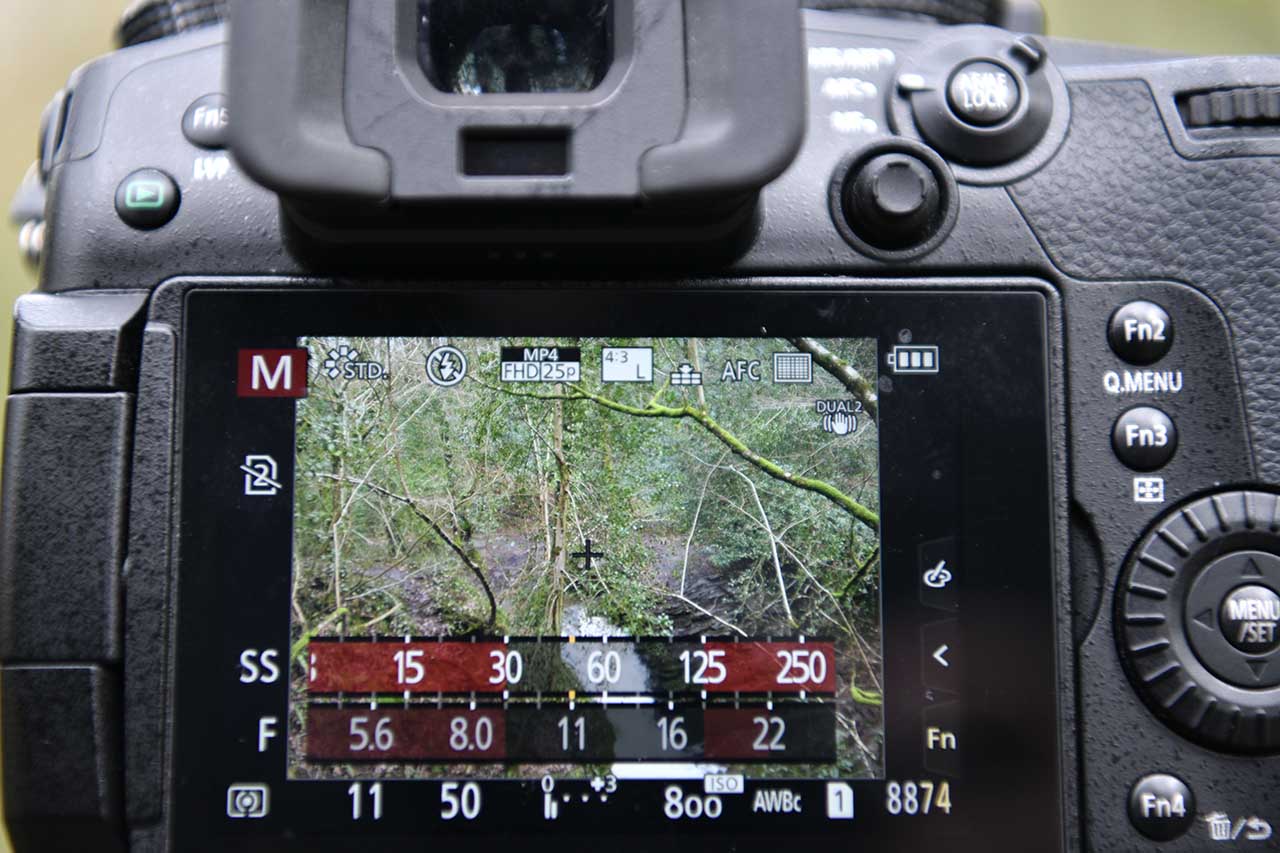Check out this link for a good explanation ND Filters for Your Drone - How They Work and Which Ones to UseI did a series of 3 picture comparison shots using all 6 of my filters. About the same distance and height on each. All shot on Auto mode.
ND 4PL,8PL and 16PL {polarized)
ND 8,16,32
shot number 3 of a treeline is attached, titled with each type of filter
I only see a real different with the ND32, maybe I'm just old and half blind
You are using an out of date browser. It may not display this or other websites correctly.
You should upgrade or use an alternative browser.
You should upgrade or use an alternative browser.
ND filter comparison Shots
- Thread starter mavin
- Start date
MEFfly
Active Member
- Joined
- May 20, 2019
- Messages
- 34
- Reactions
- 21
There is no manual aperture control on the originally Mavic Pro (unless there is some secret menu I have not found)... I think the OP was using a borrowed MPOh sorry, you’re using a pro, so you can change aperture, but the same logic applies.
Thanx, that was what I was searching forCheck out this link for a good explanation ND Filters for Your Drone - How They Work and Which Ones to Use
Lucas Galli
Member
- Joined
- Nov 4, 2018
- Messages
- 18
- Reactions
- 8
- Age
- 44
McCart, I (truly) don't mean to offend, but please try to verify information before you spread it. It's for everyone's sake.I recognize the OP is focusing on photos and some previous posters have mentioned video as the reason for ND filters, but here is a short, but concise explanation of why it is important in video shooting:
The 180-degree rule is a standard in the film industry, and it explains the relationship between shutter speed and frame rate when recording motion in the video. To mimic motion the same way the human eye experiences it in real life, the 180-degree rule states that shutter speed should be set to double your frame rate. The ND filters can help get the shutter speed down in brighter lighting conditions that would normally default above a shutter speed of 60 (for the Mavic shooting at 30 FPS) or 120 (at 60 FPS)
I am appalled with the spreading of this piece of misinformation, even by some "professionals". The 180º rule have absolutely nothing to do with framerate or shutter speeds. It's a composition technique regarding the positioning and relationship between two subjects on the screen. It's one of the basic rules we learn on cinema school.
brett8883
Well-Known Member
180 degree SHUTTER rule.McCart, I (truly) don't mean to offend, but please try to verify information before you spread it. It's for everyone's sake.
I am appalled with the spreading of this piece of misinformation, even by some "professionals". The 180º rule have absolutely nothing to do with framerate or shutter speeds. It's a composition technique regarding the positioning and relationship between two subjects on the screen. It's one of the basic rules we learn on cinema school.
Shutter Speed, Frame Rate and the 180° Rule
PolarPro® designs and innovates camera solutions built for rugged conditions, engineered to inspire you to get out and shoot. Camera filters are in our DNA and we've spent the last 9 years reimagining and pushing the industry forward with game-changing products like the VND, BaseCamp, Summit...

Cinematic Motion Blur – 180° Rule
Setting the right shutter speed is an important task in video and timelapse. Although setting it in a video is easier than in the timelapse, it’s not always a piece of cake. This text was created d…
 beyondthetime.net
beyondthetime.net

What is the 180-degree shutter rule when shooting video?
Learn the 180-degree shutter rule for smooth motion in video and how to apply it to improve your footage and add impact.
 camerajabber.com
camerajabber.com
Commonly referred to simply as the 180 degree rule in a certain context
What you are referring to
Last edited:
Lucas Galli
Member
- Joined
- Nov 4, 2018
- Messages
- 18
- Reactions
- 8
- Age
- 44
Nope. I hope the Wikipedia article can enlighten the matter.Isn't that the rule of thirds?
Indeed. If your drone carries a rotary shutter film camera, then you are right.180 degree SHUTTER rule.

Shutter Speed, Frame Rate and the 180° Rule
PolarPro® designs and innovates camera solutions built for rugged conditions, engineered to inspire you to get out and shoot. Camera filters are in our DNA and we've spent the last 9 years reimagining and pushing the industry forward with game-changing products like the VND, BaseCamp, Summit...www.polarprofilters.com

Cinematic Motion Blur – 180° Rule
Setting the right shutter speed is an important task in video and timelapse. Although setting it in a video is easier than in the timelapse, it’s not always a piece of cake. This text was created d…beyondthetime.net

What is the 180-degree shutter rule when shooting video?
Learn the 180-degree shutter rule for smooth motion in video and how to apply it to improve your footage and add impact.camerajabber.com
Commonly referred to simply as the 180 degree rule in a certain context
I apologize for my ignorance.
brett8883
Well-Known Member
It doesn’t of course but motion blur is still important even with an electronic shutter no? Now that we have established that there are two 180 degree rules in cinema which you were absolutely correct about the one, I think RED does a good job of explaining how the “concept” of shutter angle is still important. I think we can still all be correct here.Indeed. If your drone carries a rotary shutter film camera, then you are right.
I apologize for my ignorance.
“CONCEPT
The "shutter angle" is a useful way of describing the shutter speed relative to the frame rate. This term is a conceptual relic of rotary shutters, where a disc with an angled opening would spin and let in light once per revolution to expose each frame. The larger the angle, the slower the shutter speed, all the way up to the limit of 360°, where the shutter speed could become as slow as the frame rate. At the other extreme, the shutter speed can be made arbitrarily fast by decreasing the angle.

Exposure Duration (in Red) at Three Shutter Angles
Although current cameras don't necessarily control shutter speed in this way, the shutter angle terminology has persisted as a simple and universal way of describing the appearance of motion blur in video. If one wants subjects that are blurred for a greater fraction of their frame to frame displacement, then one would choose a larger shutter angle, and vice versa.
APPEARANCE
By far the most common setting for cinema has been a shutter angle near 180°, which equates to a shutter speed near 1/48 of a second at 24 fps. Any larger, and motion appears more smeared since the end of blur in one frame extends closer to the start of blur in the next frame. Any smaller, and the motion appears more stuttered and disjointed since the blur gap increases, causing frames to become more like discrete images.

(Frozen Motion for Three Successive Frames)

(Overlaid Motion Blur vs. Shutter Angle
180 degrees)
Although the above example is helpful for understanding the underlying behavior, one typically doesn't see motion blur within each frame as they would in a still image. In practice, the shutter angle also has a more subjective influence on the overall feel of motion footage even if one isn't necessarily aware of the precise settings.”
(https://www.red.com/red-101/shutter-angle-tutorial)
So the concept still remains relevant even though, as you corrected point out, it no longer refers to the physical rotary shutter on the camera but the term is still used to describe the relationship between frame rate and shutter speed.
Similar threads
- Replies
- 0
- Views
- 948
- Replies
- 0
- Views
- 2K
- Replies
- 5
- Views
- 1K
- Replies
- 0
- Views
- 508
- Replies
- 0
- Views
- 1K
DJI Drone Deals
New Threads
-
-
4 Pro Night Christmas Boats Parade
- Started by MikeReidPhotography
- Replies: 1
-
-
Mini 5 Pro Mist-erious Forest | West Coast rainforest with Mini 5 Pro & 3 Pro
- Started by DMD Cine Attic
- Replies: 3
-










